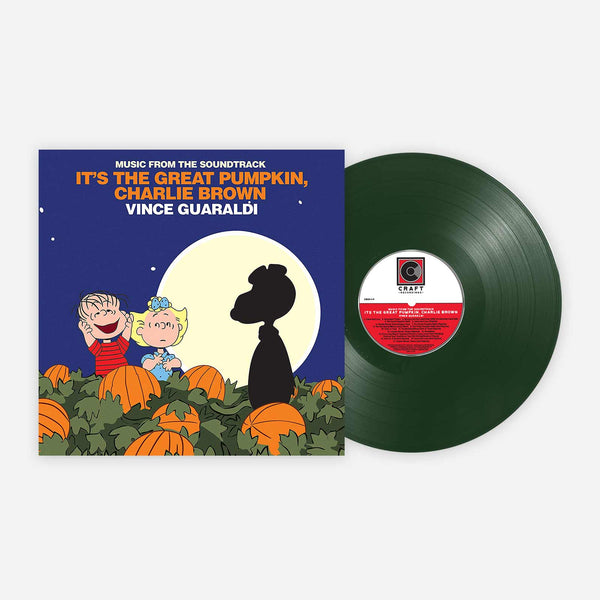彼の20代前半までに、ドナルド・バードはその激しく表現力豊かなトランペットスタイルでニューヨークのビバップシーンを突破しました。大学在学中、バードはアート・ブレイキーとジャズ・メッセンジャーズに参加し、そこから彼はジャズの世界に足跡を残し始めました。1950年代中頃には、ザ・ロニウス・モンクやジョン・コルトレーンのような当時の主要なミュージシャンたちと共に演奏する機会がありましたが、その後、自身のキャリアを始めることになります。それから間もなく、彼はハービー・ハンコックのようなアーティストのキャリアを立ち上げる手助けをすることになり、ハンコックはバードをメンターであり初期の影響を与えた人物として考えています。
バードは生まれながらのリーダーであり、若い仲間の音楽家たちに契約を交渉し、出版権を自分自身で保持し、創造的自由のために戦うよう奨励しました。バードが伝えたこれらの教訓は、アーティストがしばしば不公平に扱われていた時代に、ミュージシャンが自分の創造的アイデアを公正に所有する道を開く手助けをしました。彼の広範なキャリアの中で、バードは自身のグループを50以上のアルバムでリードし、他のほぼ100のアルバムにも参加しました。バードは最終的に音楽教育の博士号を取得し、いくつかの異なる大学で教鞭を執り、彼を体現する音楽で若者たちを指導し教育し続けました。
ドナルド・バードという名前が馴染みのない人であっても、何らかの形で彼の音楽を耳にしたことがあるでしょう。彼は、A Tribe Called Quest、Nas、Public Enemy、2Pac、De La Soul、NWA、The Pharcydeなど、ヒップホップのストラトスフィアで誰にでもサンプリングされています。ヒップホップの誕生から今までの彼の影響を振り返ると、彼のアート、声、思考なしでは、音楽のリスナーやクリエイターにとっては全く異なる世界だったに違いありません。
ジャズ愛好家であれ、単なる通りすがりであれ、ドナルド・バードのジャズ史における足跡は、集合的な感謝の念を持って受け止められています。このコンセンサスは近い将来も変わらないと言えるでしょう。彼の音楽と教育の遺産は常に祝福され続けます。バードはもはやこの世にはいませんが、彼が残したアートは永遠に人々の人生を変え続けるでしょう。
バード・イン・ハンド
バード・イン・ハンド — 1959年に録音された — は、若いグループリーダーから発せられる熱意に満ちた、全体として優れたジャズレコードです。ここでは、バードの急速に発展するトランペットスタイルが正面から示されています。彼はトランペット奏者およびリーダーとしての成功の前兆を多く見せています。このレコードのグループには、チャーリー・ラウス、ウォルター・デイビス・ジュニア、サム・ジョーンズ、ペッパー・アダムス、アート・テイラーなど、当時の偉大なジャズセッションプレイヤーが関わっていました。バード・イン・ハンドの録音は、制作当時はほとんど認知されていませんでしたが、これらの作品の実行は絶対的に素晴らしいです。特に、バードのオリジナル作品は感情的で雄弁であり、各プレイヤーが独自の音色を提供しています。バードとともに、このセクステットは、流動的なハードバップ志向のスタイルでこれらのセッションに臨み、一貫した創造性を提供します。
フリーフォーム
バードの初期作品の中で、フリーフォームは最高の一つとして残っています。このレコードは、ジャズの異なる側面を探求しながらも一貫性を保ちながら、バードと仲間たちは流暢な表現でそれを提供しています。「フリーフォーム」では、バードが偉大なウェイン・ショーター(同じくジャズ・メッセンジャー)や非常に若いハービー・ハンコックと共演しているのを聴くことができます。これほどの才能を持つグループがいると、バンドが各音楽的対話のラインを進む中、深く聴きたくなるでしょう。バードはこのグループを多様なジャズスタイルのうねりに導きつつ、自身のトランペット演奏の独自のブランドを見つけていきます。このLPのタイトル曲は11分の力強い即興演奏であり、各ミュージシャンの個々のスキルとグループとしてのスキルを完璧に示しています。バード、ハンコック、ショーターは素晴らしいソロを交わし、一方ビリー・ヒギンズの緻密で刺激的なドラムが曲を推進し、バッチ・ウォーレンのベースがリズムを維持します。このような強烈なグループダイナミクスは、このレコードのどこにでも見られます。フリーフォームは、バードのキャリアの中で彼自身をシンプルでクリアなトーンのトランペット奏者、そしてニューヨークのジャズシーンの運命づけられたリーダーとして際立たせた瞬間です。
新しい視点
バードのフュージョン前時代の革新的な要素である新しい視点は、バードの想像した現代のゴスペル讃美歌を包含しています。彼のライナーノーツによると、バードは完全に精神的な作品のみで構成されたものを書きたいという長年の願望を表明しました。このレコードで彼はこの願いを実現します。このプロジェクトは、ニューオーリンズのような場所での過去の時代に聞こえた宗教音楽に現代的なジャズのひねりを加えています。彼は、特定の音楽を演奏する伝統的な方法に対して完全な敬意を払うことを述べています。バードは作曲家のコレリッジ・テイラー・パーキンソンを招き、強いゴスペルの特性を提供する8人の合唱団を指揮します。バップ時代の偉大なサックス奏者であるハンク・モブレーも、このアルバムに彼の微妙ながらも効果的なスタイルで参加します。このスタイルは非常に重要な要素であり、より攻撃的なものはアルバムのトーンに悪影響を与えることになります。このグループは、彼らの演奏によって一緒に物語を語り、バードのプロジェクトへの元々の意図を満足させます。新しい視点は、精神的なつながりの作品であり、60年代のジャズにおいて真に記憶に残る瞬間です。
エレクトリック・バード
エレクトリック・バードは、バードが初期のジャズフュージョンの形に移行するアルバムです。即興演奏、ファンキーな方向性、全体のジャズミュージシャンシップの面白い使用が、このアルバムの重要な部分です。ミiles・デイビスのフュージョンスタイルがちらりと見られ、特にビッチズ・ブルーでは、このレコードの数ヶ月前にリリースされました。このわずかな類似点にもかかわらず、バードと彼の頻繁なコラボレーターたち、ロン・カーター、ペッパー・アダムス、ルー・タバックイン、エルト・モレイラは、本当に独立して立つことができるジャズフュージョンアルバムを作り上げ、ほぼ50年間の存在を保ち続けています。モレイラのドラムスタイルは、このレコードに強い印象を与えています。彼はブラジル出身のドラマーであり、その演奏全体にブラジルの打楽器的影響が感じられ、特に彼の貢献した作品「シババ」では顕著です。エレクトリック・バードの4つの作品は非常に想像力豊かです。異なるエフェクトや楽器を用いて、このグループは空間的でしばしば elusiveなサイケデリックな雰囲気を作り出し、すべてのフリーフォーム即興演奏とのバランスを取ります。これはアルバムオープナー「エスタバニコ」で即座に例証されます。すべての曲はオープンエンデッドな作品として機能し、全体の流れが常に変化しても決して混沌にはなりません。エレクトリック・バードは、ジャズフュージョンの必須アイテムであり、バードのキャリアにおける真の焦点です。
ブラック・バード
ブラック・バード(後にバードのサイドグループであるブラックバードの名前の由来となったタイトル)は、彼のディスコグラフィーの中で最もファンキーなレコードの一つです。表現豊かなフルート、トランペット、ダンス可能なリズムが各トラックに散りばめられ、言葉を超えた作品を生み出しています。ブラック・バードがブルーノートレコーズのベストセラーアルバムの一つであるのも不思議ではありません。これがバードにとって成功であった一方で、多くのジャズ愛好者は、彼がかつて所属していたハードバップジャンルを捨ててファンクとソウルの音に進出したことで、彼を売れっ子と見なしました。どんなエリートが何を言おうとも、バードはフュージョンジャンルを革命していました。この時代の混沌としたジャズファンクの類ではなく、ブラック・バードはメロディックでストレートフォワードを目指していました。バードのリラックスしたジャズのオーバートーンは、彼のファンク仲間のサウンドと混ざり合い、耳を惹きつけてやまないレシピを作り出します。バードは一部のトラックで後ろに引いているものの、ボビ・ハンフリーのようなフルートソロがこのレコードの音を定義する大きな影響を与えます。これはまた、多くのアルバムでミゼル兄弟によって制作される最初の作品でもあり、彼らのパートナーシップはバードのブルーノートのクラシックリリースの音をさらに形作る手助けをしました。このアルバムは、何かが欠けているとは決して思わせない音を完全に達成しています。前から後ろまで、このレコードはすべてのサウンドステージの隅々から送られる強力な楽器の滝のように溢れ出しています。ワウワウギター、ファンキーなベース、風に吹かれるフルート、超アクティブなキーボード、タイトなパーカッション、そしてバードの饒舌なトランペットが、このアルバムのDNAを形成しています。このアルバムには、ボーカルやシンセサイザーも混ぜられています。これはファンクアルバム不足のものではありませんが、これら二つの要素は当時のジャズ純粋主義者にとってほぼ冒涜的なものでした。しかし、彼の判断はバードを阻止することはなく、彼は自分の声を見つけ、音楽家として進化する準備が整ったのです。
ストリート・レディ
1973年はドナルド・バードにとって非常に重要な年でした。ブラック・バードの速やかでやや物議を醸した成功を受けて、続編のストリート・レディがその後すぐにリリースされました。この二つの録音の間の短い時間にもかかわらず、これらのアルバムはそれぞれジャズ、ファンク、ソウルの異なる側面を展開しています。ストリート・レディは、ソウルとR&Bにより強く焦点を合わせ、ファンク要素が間に織り込まれています。カーティス・メイフィールドのようなアーティストが有名にした音がストリート・レディの核心です。1970年代の都市や市の風景は、この夜の女の物語についてのこの緩やかなコンセプトアルバムの舞台であり、音楽はそれを完全に表現しています。このアルバムは、1970年代のオリジナルサウンドトラックのように流れます。各曲は、重いバックビートとバブリーなリズムに乗せられ、ソロがミックスの中で飛び交いながら、ジャジーなソウルディスコに仕上げられています。このアルバムは、前作の成功に非常に近くリリースされたため、リスナーはそれを軽視しがちです。中には、アイザック・ヘイズやメイフィールドのブレイクスプラテーションサウンドトラックのコートテールに乗る試みだと考える人もいます。しかし、ストリート・レディは、強調されたソウルグルーヴ、説明しがたいミュージシャンシップ、ラリー・ミゼルの最高の制作が詰まった過小評価されたものです。
明日へ一歩踏み出す
プレイシズ・アンド・スペイシズの直後にリリースされたこのアルバムは、ジャズの側面に重点を置きつつ、リッチなソウルトーンに浸っています。このアルバムは、タイトル曲「明日へ一歩踏み出す」であなたを迎え入れ、シン・ラスタイルのマントラを歌うシンガーたちによって繰り返されるスピリチュアルなソウルの冒険です。リズム重視のこのトラックが進むにつれて、ますます多くの楽器や遠くの音が絡み合い、安定性を保ったまま信じられない高まりを生み出します。バードのディスコグラフィーの中でも最もキャッチーなフックがこのトラックに見つかることは言うまでもありません。このアルバムの魅惑的なギターとボーカルは、贅沢なオーケストレーションとバードの専門的なレベルのトランペット演奏と組み合わさる重要な役割を果たします。明日へ一歩踏み出すは、確かに時代を先取りしたレコードです。多くの瞬間が、過去10年から20年の間にリリースされたと感じさせるものがあります。「Think Twice」という情熱的な曲は、1990年代後半から2000年代初頭のネオソウル運動を彷彿とさせるメロディとスイングがあります。このトラックとこのアルバムの他の多くの曲が、90年代の偉大なヒップホップアクトであるメイン・ソースやA Tribe Called Questに数えきれないほどサンプリングされています。これによってバードの名前は、ジャズラップの典型的なサウンドに刻まれました。アルバムの終盤で「You Are The World」は、揺れるシンセサイザーの効果と落ち着かないドラムパターンでペースを上げ、異世界的なサウンドを生み出します。このアルバムは、ソウル・ジャズのジャンルに関しては時に見過ごされがちですが、それでもその情熱的で滑らかなソーラー・ジャズの気質は認識と評価に値するものです。
プレイシズ・アンド・スペイシズ
わずか35分で、このアルバムは他のアーティストがキャリア全体で達成可能なもの以上を提供しています。プレイシズ・アンド・スペイシズを通じて、バードの巧みなトランペットとフリューゲルホルンの演奏は、決して自惚れず、常に魅了しています。例えば、「あなたと音楽」において、彼は曲を秩序正しく進めながら、制限なしで演奏する能力を示します。バードは各トラックに多くの活力を加え、その結果、彼がかつてないほどの名手と見なされる理由がさらに証明されます。彼と一緒に、さまざまな弦楽器のアレンジや甘美なボーカルがそれぞれの旋律をスムーズに流れます。このアルバム全体のドラムは非常にパワフルで、ドラムキットの一撃一撃が強烈です。この非常に敏感なドラムと弾むような弦楽器が、このトラックに他の多くのレコードとは異なる特徴的なリズムを与えます。ジャズファンクやソウルの領域にある多くのアルバムとは異なり、このアルバムは個々の技術を見せつけるのではなく、感情を届けることに重きを置いています。それは確かに幸せという感情ですが、心、体、魂の自由の感覚もあります。タイトル曲は、豪華な楽器で満たされたソウルファンクのオデッセイであり、リスナーを永続的な喜びで完全に浸します。高揚感のあるメロディとアレンジがこのトラックのあらゆる瞬間に刻まれ、エーテル的な声と弦楽器が渦を巻く様子が見られ、やがて硬いファンクグルーヴに突入し、最終的には最初に実装されたソウルフルなストライドに戻ります。このブルーノートの名作の美しさは、聴いた後に誰もが異なるメッセージを得ることです。
カリカチュアーズ
このレコードがリリースされた時点で、バードはジャズだけでなく、フュージョンジャンルのリーディングトランペッターとしてすでに名を知られていました。このアルバムは、クリエイティブなピークに達していないことを明確に示しており、常に変化する音楽の世界に対応し続けられることを証明しています。このレコード全体には、ディスコ風のグルーブが縫い込まれたエネルギッシュなペースが刻まれています。カリカチュアーズ — 彼のブルーノートでの最後のアルバム — では、バードのカタログの中のどのアルバムよりも彼の最高のパフォーマンスが披露されています。ただ単に彼が演奏していることが素晴らしいのではなく、彼が演奏する中で、いかに他のグループをオーケストレーションしているかが素晴らしいのです。彼は他のバンドに干渉したり衝突したりすることはなく、表現を制限することなくバランスを見つけます。
たとえこれがバードの音楽キャリアの後半にリリースされたものであったとしても、彼は聴衆を席の端に留めるためにジャズの熟練さと純粋なファンクとソウルの技をブレンドした雰囲気を依然として生み出していました。例えば、「サイエンス・ファンクション」 — このダンスフレンジーレコードの主要なハイライトの一つ — は、シンセサイザーとトランペットの間の未来的なファンクの対決であり、他のグループはその下に鋭く機械的なリズムを提供します。このリズムセクションの強靭さは、アルバム全体で重要な役割を演じており、これらの曲はそれを結びつけるものがなければ簡単に崩壊することができます。このレコードには当時のトップクラスのジャズとソウルのプレイヤーたちが参加しており、80年代のスターであるパトリス・ラシュンが含まれています。このアルバムは、無限の感情で満ちたユートピアに授けられています。感染性のある足を叩くリズムは、鮮やかかつ深く植え付けられ、あなたはこれらの曲が終わることを望まなくなります。バードのプロジェクトを聴くたびに、あなたはその全ての瞬間がいかに素晴らしいかに心奪われることでしょう。無駄なものは一切見当たらず、各小節は前のものと同じくらい重要で魅力的です。カリカチュアーズは、バードのディスコグラフィーにおける際立った瞬間だけでなく、彼が表現しているジャンルの中での重要な作品です。
コフィ
1969年と1970年の間に録音されましたが、1995年になってブルーノートはバードの広大なカタログの中で確かに際立った作品をリリースしました。これらの未発表トラックは、彼の70年代のファンク/ソウルフュージョンへの探求の前の最後のセッションから取られました。ここでは、彼のジャンル転換前のスタイルについての認識が得られます。このアルバムの一般的なトーンはリラックスしており、バードの演奏は非常に力強く、しばしば感動的です。彼の詩的なトランペット演奏スタイルが十分に示されており、バンド全体の熱意も同様です。これらの演奏者たちの相互作用は、1960年代の多くのクラシックジャズグループと比較することができます。このレコードには、ベースにロン・カーター、ドラムにエルト・モレイラなどのジャズのベテランたちが参加しており、さまざまな曲を優雅に補完しています。バードのアイデアの提示と、これらのセッションでの各プレイヤーとのケミストリーが、このアルバムをジャズファンやミュージシャンが聴くべきものにしています。
マット・ハスレットはフィラデルフィアを拠点にする音楽家、レコードコレクター、フリーランスのライターです。現在、彼はStereolab、CAN、Ariel Pinkに夢中です。






